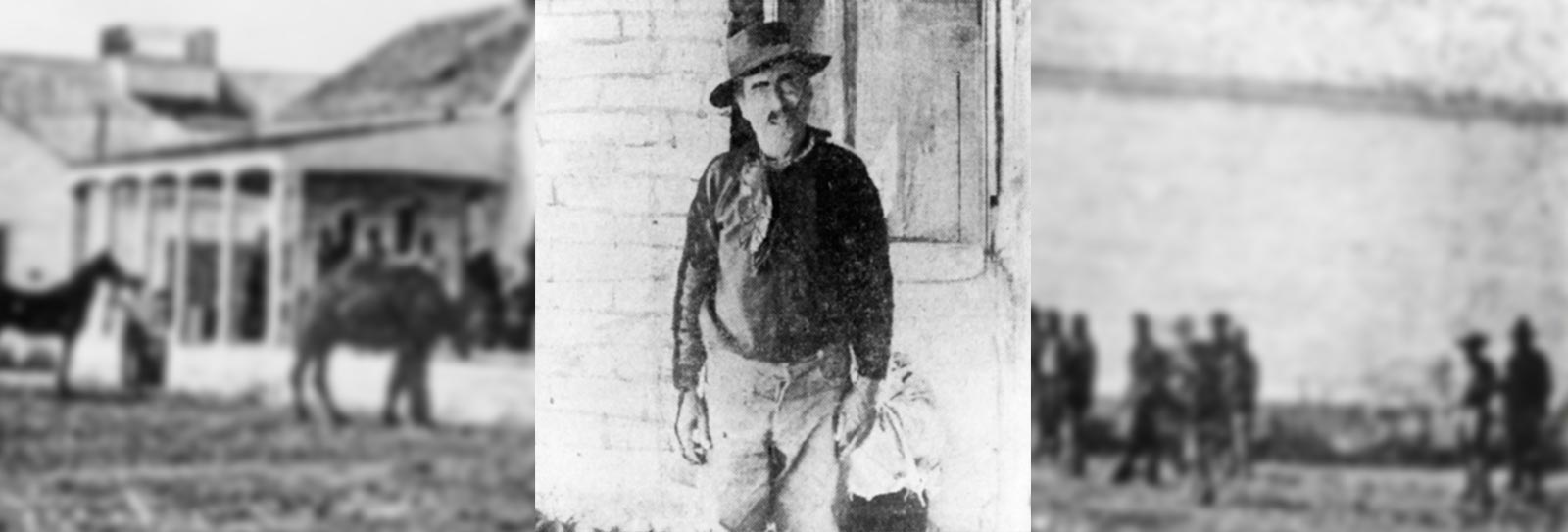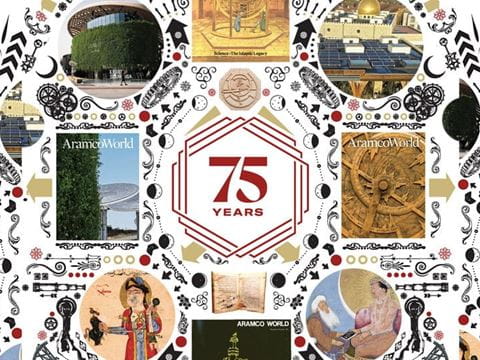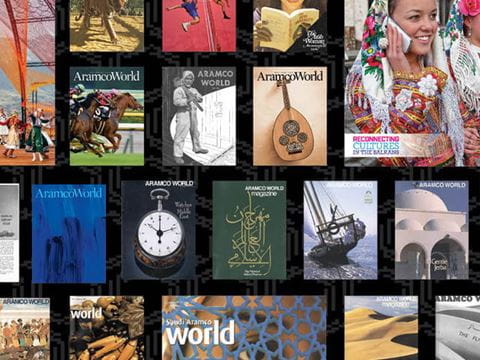
Hi Jolly – Uncle Sam’s Camel Captain
As a young man in Ottoman Turkey, Hadji Ali became an expert camel handler. In 1857 he accepted the US Army’s offer to assist its deployment of camels in the southwestern deserts, where his name was Americanized to “Hi Jolly.” His skills proved valuable, and yet he died penniless. Today his memory endures in legend as much as in fact—and on one miniature pyramid in Arizona.
On a bitterly cold December night in 1902, one of Arizona’s blinding dust storms howled across the Sonoran Desert. In a ramshackle saloon in the town of Quartzsite, an old prospector spun his story. To most of his audience, it must have seemed like another tall tale, this one about a beast the prospector claimed he saw outside town with a tongue that glowed like a flame.
As he spoke, one of the older men paid close attention. To his ears the so-called beast sounded like nothing more than a camel, and he didn’t buy the part about the glowing tongue. He asked the prospector where the encounter had occurred, rose from his seat and bid those in the saloon farewell. It was the last time the man known as Hi Jolly was seen alive—or so the legend goes.
Days later the story concludes with Hi Jolly discovered half-buried in the blown sand, one arm wrapped around the neck of a camel, both having perished in the storm. The legend even adds a trace of a smile to his face, because Hi Jolly had found an old friend.
It’s not likely Hi Jolly really died this way, and historically speaking, we know only that Hi Jolly passed away on or near December 16, 1902, in Quartzsite, a tiny town in Western Arizona. We also know that, although he died destitute and separated from his family, his real-life exploits have caught the eyes and captured the imaginations of historians, songwriters, TV producers and Hollywood filmmakers. Like the audience in the apocryphal saloon, all have been drawn in by his story, a uniquely American larger-than-life tale of frontier adventures and contradictions.
He was born around 1828 and named Philip Tedro by his mother, who was Greek, and his father, who was Syrian. They lived in Smyrna (now Izmir), a city on the Aegean Sea in Ottoman Turkey. As a young man Philip’s spiritual path led him to become a Muslim, and he adopted the name Ali. He made Hajj, the pilgrimage to Makkah, after which he took the title “Hadji”—one who has performed Hajj—and he went as Hadji Ali. By profession, he was an adept camel driver and breeder.
In 1856 a US diplomat named Gwinn Harris Heap arrived in Smyrna carrying funds to purchase several dozen camels for the US Army under the direction of then-Secretary of War Jefferson Davis. The army planned to deploy the camels as long-range pack animals in the desert territories acquired from Mexico. Among eight men hired in Smyrna to help with the task was Hadji Ali. He traveled into the interior of Turkey to help purchase 33 camels, which were loaded on board the USS Supply and sent to Texas. The next year the army came back for more, and this time Hadji Ali was hired as a full-time handler. In Texas he marched 41 camels inland to Camp Verde in the hills west of San Antonio, where they joined up with the camels that had arrived the year before. The Texans had a hard time pronouncing “Hadji Ali,” and when they localized his name to “Hi Jolly,” it stuck.


Novelist Téa Obreht, who included a character based on Hi Jolly in her 2019 Inland, remarked that he “haunted me: an Ottoman subject caught between his old empire and his new one, not quite belonging anywhere; the warden of creatures that were utterly pedestrian to him, but a source of endless fascination to everyone who encountered them.”
His first expedition with what is unofficially known as the US Army’s “camel corps,” took Hi Jolly deep into the frontier with 25 camels hauling supplies for Lieutenant Edward Beale’s survey of a 1,600-kilometer wagon road from Fort Defiance in the New Mexico Territory to the Colorado River. The expedition proved a success, in part thanks to the camels. Beale’s road became a well-worn trail for westward migration in the 1860s and 1870s. Later the Santa Fe Railway, and America’s iconic Route 66, would follow Beale’s path.
Hi Jolly and the other camel drivers do not appear to have been particularly well-treated in the Army. He and several other camel drivers went on strike at least once over a lack of pay. Their quarters were not in the barracks with the troops but in a shed at the back of the camel barn.
Like many immigrants, Hi Jolly adapted his name and identity to his circumstances—in his case, helping blaze settler trails only to watch railroads make them obsolete.
In 1860 the army experimented with its camels to create an express messenger service between Los Angeles and Fort Mojave on the Colorado River. The initial run saw Hi Jolly riding the camels hard and fast, like a rider for the Pony Express. One camel died from exhaustion.
After that Hi Jolly was transferred to care for the camels the Army had moved to Fort Tejon in Southern California. From there he led another nearly fatal expedition, this one to survey the northern Mojave Desert and Death Valley: The camels were credited with saving the lives of the men.
The army moved the camels again, to Camp Latham, closer to Los Angeles, in another attempt at using them for express mail service. This time the route would cover some 450 kilometers from San Pedro, California, to Yuma, Arizona. Once again army command chose Hi Jolly to ride the first run, but it all too quickly ended in tragedy: The camel died after only 100 kilometers.

The Civil War in 1861 brought the camel corps experiment to an end. Former Secretary of War Jefferson Davis became a senator from Mississippi and then president of the Confederacy. In Texas the Army surrendered Camp Verde to the secessionists, retook it four years later and in 1869 abandoned it. Today it is a small town where a historical marker commemorates the fort’s role in the camel corps, and a plaque, featuring a camel, hangs on the wall of its post office.
Hi Jolly left the army in 1870, and he continued to work with other pack animals. He also was, it seemed, something of a raconteur. The Arizona Republic wrote this about a moment of political theater in 1871:
Jolly was in Los Angeles during the Franco-Prussian War and when the news of the downfall of Paris reached that place the Germans of the city held a big picnic a short distance out of town. Jolly was a sympathizer of the French cause and the jollification of the Germans greatly enraged him. He hitched up a couple of the old camels to a government wagon and with several wild whoops dashed into the midst of the merrymakers, causing great consternation and a general stampede of men and teams.

Reporting the same incident, The Los Angeles Herald described him as the “man who enjoys the happy distinction of being Uncle Sam’s camel-tamer” and who “relates anecdotes with a cleverness that would make Mark Twain jealous.”
When the US Army quit using camels, Hi Jolly obtained a handful of them to start a private freight service between the Colorado River and mines in Arizona, as well as a camel express service between San Diego and El Paso. One traveler described him bringing water to stagecoach stops on the backs of 25 camels and selling it to travelers. But his business faltered, and he released his camels into the wild near Gila Bend, Arizona. Accounts of the period say he was known as generous and friendly, and mention of “kneeling and fasting” indicates that he likely remained a largely observant Muslim.
In 1880 Hi Jolly became an American citizen, and he married Getrudis (Gertrude) Serna in Tucson. In doing so he reverted to his birth name, Philip Tedro, most likely to avoid tension with his bride’s Catholic family. Today, the couple’s wedding photograph (above, right) remains one of the only known photos of Hi Jolly.
Not long after the couple’s daughters Amelia and Minnie were born, he left in 1885 to run pack mules for Brigadier General George Crook’s campaign against Geronimo, the leader of the Chiricahua bands of the Apache tribe. Afterward, he returned to prospecting.
In 1891 Hi Jolly and Gertrudis had a son, Fernando Serna Tedro. Census records from 1910 place Gertrudis and all three children in Tucson, and they list Fernando’s occupation as carpenter. Records from the 1920 census show Fernando residing in Los Angeles County with his sister Amelia and her husband, and no occupation or spouse is listed. No further records of him or his sisters are known.

In 1898 Hi Jolly returned one last time to Tucson. In deteriorating health, he asked to see Gertrudis and the children, and he begged Gertrudis to take him back. She refused.
Hi Jolly returned alone to Quartzsite, at that time a town of about 20 hardy souls. The US government rejected his petition for a small military pension despite support from Arizona’s Territorial Delegate to Congress, Mark Smith. When Hi Jolly died on or around December 16, 1902, a small funeral was held, and neighbors erected a wooden grave marker.
Although the legend of Hi Jolly dying while embracing one of his long-lost camels is almost certainly pure folklore, in 1935 the Arizona Highway Department actually interred, in a stone memorial to him in the shape of a pyramid with a camel on top, the ashes of Topsy, the last of the government’s camels. The pyramid now stands at the center of a Quartzsite cemetery, where it remains a historic site and tourist attraction.
The story of Hi Jolly and the US Army’s camel corps reached beyond the Southwest. There was a folk song written about Hi Jolly in 1962; a children’s book appeared in 1959; and his character was written into at least two Hollywood movies, Southwest Passage in 1954 and Hawmps!, a comedy about the camel corps, in 1976. On television his character appeared in a 1957 episode of the classic series Death Valley Days as well an episode of the series Maverick. In Turkey, filmmaker Mert Türkoğlu produced Haci Ali in 2018 as “a documentary of an Ottoman soldier who came to the United States as an immigrant.”
Old-timers out in Arizona
Tell you that it’s true
You can see Hi Jolly’s ghost a-travelin’ still
When the desert moon is bright
He comes ridin’ through the night
Leadin’ four and twenty camels ‘cross the hill.
—“Hi Jolly, the Camel Driver,” by Randy Sparks, recorded by the New Christy Minstrels, 1962 ©Cherrybell Music Company
Leading Arab American journalist and Air Force veteran Ray Hanania included Hadji Ali in an online commemorative listing of Arab American military veterans. Hadji Ali—Hanania listed him under his original chosen name—“is one example of how Arab immigrants to America played many different roles in supporting our new adopted country, especially serving active duty in the US military,” Hanania says.
Today the spirit of Hi Jolly and the US Army’s camel corps lives most vividly on a small farm near Waco, Texas, not far from the original Camp Verde. Doug Baum, founder of the modern-day Texas Camel Corps, keeps nine camels that he trots into regional educational programs, backcountry camel treks, historical re-enactments, fairs, parades and even the occasional feature film appearance, such as when they joined Martin Sheen in 1999 in A Texas Funeral, all with references to the historical camel corps.
Baum is fascinated with the story of the army’s camel handlers and journeys, and he has reviewed the original journals of Beale and his contemporaries.
“Hi Jolly in so many ways represents every one of us,” Baum says. “He’s an immigrant, like most Americans. His story resonates with all of us because it is our story.”
You may also be interested in...

How Ancient Knowledge Shaped Modern Technology
History
Science & Nature
Part 3 of our series celebrating AramcoWorld’s 75th anniversary highlights the magazine’s emphasis on experts and institutions that push the boundaries of present-day knowledge while paying homage to historical figures and writings that paved their way..jpg?cx=0.5&cy=0.5&cw=480&ch=360)
Photo Captures Kuwaiti Port Market in the 1990s
History
Arts
After the war in 1991, Kuwait faced a demand for consumer goods. In response, a popular market sprang up, selling merchandise transported by traditional wooden ships. Eager to replace household items that had been looted, people flocked to the new market and found everything from flowerpots, kitchen items and electronics to furniture, dry goods and fresh produce.
AramcoWorld: 75 Years of Cultural Connections
Arts
History
Since its origins in 1949 as a company newsletter for Aramco, AramcoWorld has evolved to focus on global cultural bridge-building across the Arab and Muslim world and beyond.